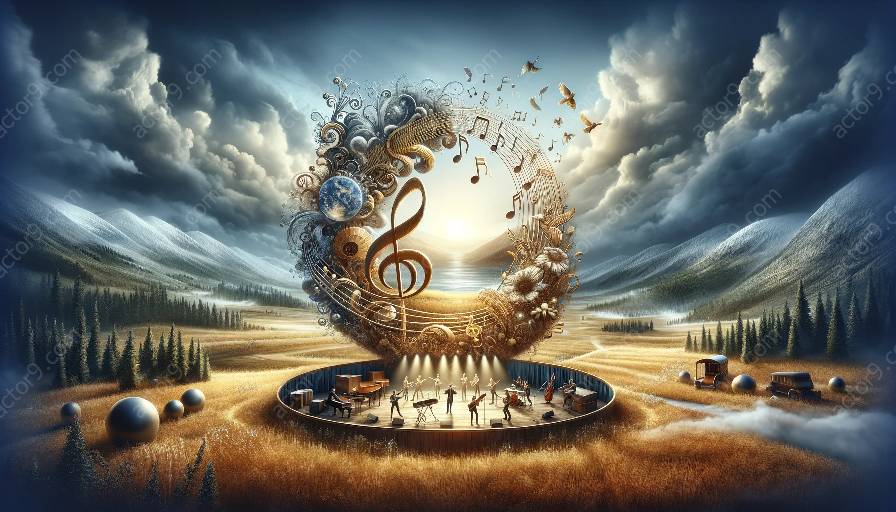Circus performances have always been a dazzling spectacle, capturing the imaginations of audiences with a thrilling combination of acrobatics, feats of strength, and comedic routines. The role of music in these performances has evolved significantly over time, shaping the emotional atmosphere of the circus and enhancing the overall experience for both performers and spectators.
Role of Music in Circus Performances
From its early origins to modern-day extravaganzas, music has played a crucial role in setting the tone for circus acts. In the early days of circuses, live bands or musicians would accompany the performances, providing a lively soundtrack that synchronized with the breathtaking stunts and elaborate choreography. This dynamic relationship between music and movement adds depth to the storytelling and heightens the audience's engagement.
As circuses evolved, so too did the music accompanying these performances. Composers and musicians began incorporating a diverse range of musical styles and genres, tailoring their compositions to complement specific acts and create a more immersive experience. The integration of technology further revolutionized the use of music in circus performances, allowing for more intricate soundscapes and synchronized cues that enhanced the overall spectacle.
Evolving Musical Styles
One of the most noticeable changes in the use of music in circus performances is the evolution of musical styles. Traditional circus music, characterized by lively marches and whimsical melodies, defined the circus experience for many years. These compositions, often performed by brass bands, became iconic and synonymous with the excitement and grandeur of the circus.
However, as circuses modernized, so did the music. Contemporary circus performances feature a diverse range of musical genres, from orchestral scores to electronic beats, reflecting the evolving tastes and preferences of modern audiences. This shift has allowed for greater experimentation and innovation in the use of music, adding new layers of complexity and emotion to circus acts.
Cultural Impact of Circus Music
Beyond its role in shaping individual performances, circus music has had a broader cultural impact. The iconic tunes associated with circuses have become ingrained in popular culture, shaping perceptions of the circus and inspiring countless artistic interpretations. Whether in films, literature, or visual arts, the evocative melodies of circus music continue to resonate with audiences, evoking a sense of wonder and nostalgia.
Conclusion
The evolution of music in circus performances reflects the dynamic nature of circus arts, adapting to changing tastes and technological advancements. From traditional melodies to contemporary soundscapes, the role of music in circuses continues to captivate audiences and enrich the immersive experience. As circuses push creative boundaries and seek new ways to astonish their viewers, music will undoubtedly remain an integral part of the enchanting world of circus arts.


































